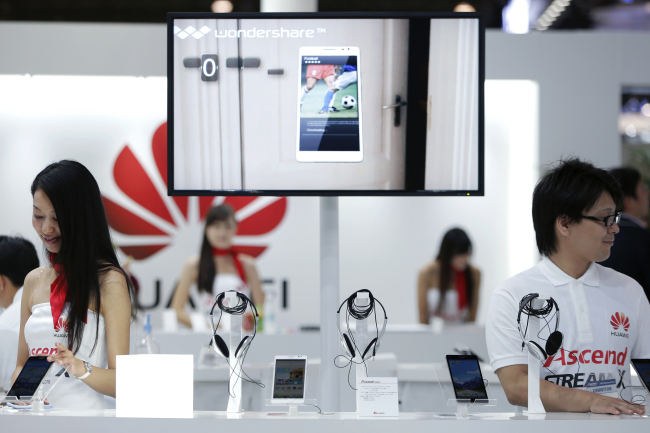Chinese smartphone companies have been growing rapidly in recent years, becoming a threat to Korean handset makers such as Samsung Electronics and LG Electronics.
Chinese companies accounted for more than 20 percent of the global smartphone market last year, a sharp jump from 8 percent in 2010, according to global research firm Strategy Analytics.
“Chinese companies’ patterns of growth have been quite similar (to each other). They have made handsome profits in their domestic market, invested in gaining a technological edge, and are currently making forays into advanced markets,” said Kim Sung-ok, a senior researcher at the Korea Information Society Development Institute.
“As some Chinese smartphone companies begin to expand in the premium markets, competition with Korean companies will be inevitable down the road,” Kim added.
Chinese companies accounted for more than 20 percent of the global smartphone market last year, a sharp jump from 8 percent in 2010, according to global research firm Strategy Analytics.
“Chinese companies’ patterns of growth have been quite similar (to each other). They have made handsome profits in their domestic market, invested in gaining a technological edge, and are currently making forays into advanced markets,” said Kim Sung-ok, a senior researcher at the Korea Information Society Development Institute.
“As some Chinese smartphone companies begin to expand in the premium markets, competition with Korean companies will be inevitable down the road,” Kim added.

Huawei and Lenovo, in particular, have shown outstanding performance in the Chinese market, as they made huge investments in research and development over the past three years.
Huawei, the world’s third-largest smartphone maker, following Samsung Electronics and Apple, is looking to boost sales of its premium handsets by spending over 10 percent of its revenue on R&D, and investing $300 million in global marketing this year.
“Around 50 percent of our smartphone sales now come from overseas markets, mostly in Europe, the Middle East and Africa. We plan to increase our presence in North America this year,” a Huawei spokesperson said recently at the company’s analyst summit.
Lenovo, which has so far focused on rolling out low-end handsets, is also seeking to introduce high-end mobile phones.
The company, which acquired Motorola’s Mobility unit in January, has around 5,000 patents for personal computers that can also be used for mobile technology development.
Its phones are sold in Indonesia, the Philippines, India and Russia, and the company plans to enter South America and the Middle East this year.
China, which used to be perceived as a market that produces inexpensive products, is gradually transforming itself into an attractive premium mobile market amid the slow growth in advanced countries and the rise of China’s purchasing power.
The average price of a smartphone in China was $189 in the fourth quarter of last year, which industry watchers said was too low to attract much attention from high-end manufacturers such as Samsung. But that could change soon, as this figure is expected to grow with the introduction of Long Term Evolution networks.
Although Samsung maintained the top spot with a 20 percent market share in the world’s second-largest economy last year, domestic companies such as Lenovo, Coolpad, Huawei, Xiaomi and ZTE still dominated their home turf overall, with a combined 46 percent share. LG Electronics accounted for less than 1 percent of the market.
China’s LTE smartphone shipments are expected to reach 360 million units by 2018, accounting for 80 percent of handsets in the market, according to Strategy Analytics.
By Shin Ji-hye (shinjh@heraldcorp.com)


















![[KH Explains] Hyundai's full hybrid edge to pay off amid slow transition to pure EVs](http://res.heraldm.com/phpwas/restmb_idxmake.php?idx=652&simg=/content/image/2024/04/18/20240418050645_0.jpg&u=20240418181020)

![[Today’s K-pop] Zico drops snippet of collaboration with Jennie](http://res.heraldm.com/phpwas/restmb_idxmake.php?idx=642&simg=/content/image/2024/04/18/20240418050702_0.jpg&u=)